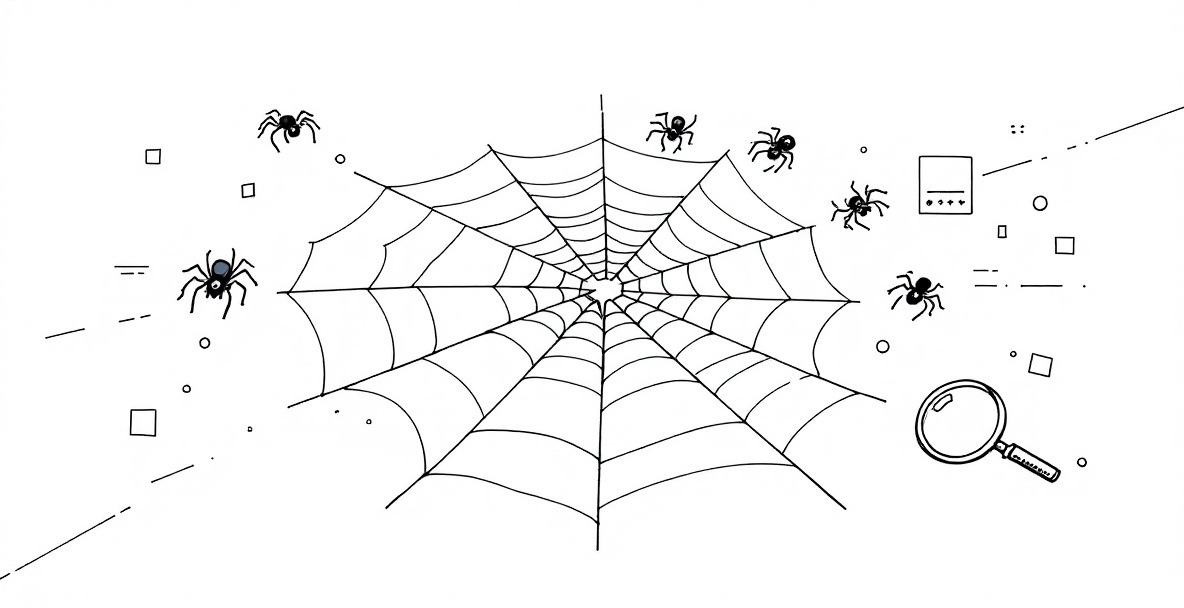Search engines can't rank what they can't find. That's the essence of the crawlability crisis many websites face today. When search engine bots struggle to navigate your site, your visibility plummets—regardless of how valuable your content might be. This article explores nine proven technical SEO audit checklist techniques to enhance your website's crawlability and ensure search engines not only find your content but fall in love with it.
Understanding the Crawlability Crisis

The State of Technical SEO in 2024
Technical SEO has evolved dramatically over the past few years. In 2024, search engines prioritize sites that offer exceptional user experiences alongside technically sound foundations. Google's increasingly sophisticated algorithms now consider page experience signals, Core Web Vitals, and mobile-friendliness as ranking factors. The bar for what constitutes "crawlable" has risen substantially, with search engine optimization fundamentals extending beyond basic indexability to include how efficiently bots can access and understand your content.
Common Crawlability Roadblocks
Many websites unknowingly create obstacles that prevent search engines from properly crawling their content. Typical roadblocks include improper robots.txt configurations, broken redirects, and orphaned pages with no internal links pointing to them. Website crawlability improvement techniques often need to address JavaScript-heavy sites that render content in ways bots struggle to process. Poor site architecture and excessive redirect chains can quickly exhaust crawl budgets, leaving valuable pages undiscovered and unindexed.
Technical Foundation: Setting Up for Crawling Success

Website Architecture and URL Structure
A logical, hierarchical site structure serves as your website's roadmap for search engines. Organize content into clear categories with URL structures that reflect this hierarchy. Keep URLs concise, descriptive, and free of unnecessary parameters or session IDs. How to perform SEO audit processes should always include checking that your URL structure follows a consistent pattern that both users and search engines can intuitively understand. Properly implemented breadcrumb navigation further reinforces your site's structure while improving user experience.
Speed and Performance Optimization
Site speed directly impacts crawlability and indexing efficiency. Search engines allocate a limited "crawl budget" to each site, and slow-loading pages waste this precious resource. Implement a comprehensive website speed optimization guide by compressing images, leveraging browser caching, and minimizing HTTP requests. Consider adopting a content delivery network (CDN) to serve assets from locations closer to your users. Optimizing Core Web Vitals metrics—particularly Largest Contentful Paint and Cumulative Layout Shift—improves both user experience and search engine crawling efficiency.
Mobile-First Considerations
With Google's mobile-first indexing, your site's mobile version determines how your content is crawled and ranked. Ensure responsive design principles guide your mobile friendly website design approach, with content parity between mobile and desktop versions. Test thoroughly for touch-friendly navigation, appropriate font sizes, and properly sized tap targets. Mobile optimization extends beyond mere responsiveness to include performance considerations specific to mobile networks and devices, ensuring crawlers can efficiently process your content across all platforms.
Content and Link Optimization Strategies

Content Architecture Best Practices
Strategic content architecture makes your site more navigable for both users and search engines. Implement clear topical clusters with pillar content linking to related subtopics, creating semantic relationships search engines can understand. A well-structured content creation strategy template should incorporate logical heading hierarchies (H1 through H6) that create content landmarks for crawlers. This architecture should reflect user intent mapping, with each page serving a specific purpose within your broader content ecosystem.
Internal Linking Strategy
A robust internal linking framework creates pathways for search engines to discover and understand your content relationships. Implement contextual internal links that use descriptive anchor text rather than generic "click here" phrases. Link building best practices should include strategic internal linking to distribute page authority throughout your site and highlight important content. Audit your site regularly for broken internal links or orphaned pages that receive no internal links, as these issues can severely hamper crawlability.
Quality Backlink Development
While internal links create crawl paths within your site, external backlinks signal to search engines that your content deserves attention. Focus on how to build quality backlinks rather than quantity, targeting relevant, authoritative sites within your industry. Develop linkable assets like original research, comprehensive guides, or unique tools that naturally attract links. Authority building digital marketing strategies should emphasize genuine relationship development with industry publications, complemented by content worth linking to rather than manipulative link schemes.
Monitoring and Measurement Tools

Essential SEO Audit Tools
Regular technical audits form the backbone of crawlability maintenance. Google Search Console provides critical insights into how Google sees your site, flagging indexing issues and crawl errors. Combine this with specialized crawling tools like Screaming Frog or Sitebulb to identify technical issues before they impact rankings. SEO benchmarking performance metrics should be established using these tools to track improvement over time. For larger sites, log file analysis reveals exactly how search engines interact with your pages, showing which content receives crawler attention and which gets overlooked.
Performance Metrics and KPIs
Effective crawlability optimization requires clear metrics to measure success. Track indexation rates, crawl stats, and coverage issues in Google Search Console as primary data driven marketing decision making indicators. Monitor Core Web Vitals through PageSpeed Insights or Chrome User Experience reports to ensure performance meets current standards. Establish baseline metrics for crawl efficiency, such as crawl-to-index ratio and crawl budget utilization, to identify improvements or regressions over time.
Data-Driven Optimization
Transform monitoring data into actionable improvements through iterative optimization. Use content marketing ROI measurement frameworks to prioritize fixes based on potential impact. Implement server log analysis to understand crawl patterns and identify underserved content areas. In SEO Tuts' experience, sites that adopt data-driven optimization typically see 30-40% improvements in crawl efficiency within three months. This approach ensures resources target the most impactful crawlability issues first, maximizing return on technical SEO investments.
Implementation and Next Steps
Priority Action Items
Begin your crawlability improvement journey with these high-impact tasks: First, conduct a comprehensive technical audit focusing specifically on indexation issues. Next, optimize your robots.txt and XML sitemaps to guide crawler behavior effectively. Third, implement schema markup to help search engines understand your content context. Ecommerce optimization strategies guide principles suggest prioritizing product and category page crawlability for online stores, while content-focused sites should ensure proper content hierarchy and internal linking structure. Address mobile usability issues immediately, as these directly impact how Google crawls and indexes your content.
Maintenance and Monitoring
Crawlability isn't a one-time fix but an ongoing process requiring regular attention. Establish a quarterly technical SEO review schedule using your digital marketing certification courses knowledge to stay current with evolving best practices. Set up automated monitoring for critical crawl errors and indexing issues. Develop a proactive approach to content pruning, regularly identifying and addressing thin or duplicate content that wastes crawl budget. Remember that search engines continually evolve their crawling capabilities, requiring vigilance and adaptation to maintain optimal crawlability.
Search engine crawlability is the foundation upon which all other SEO efforts rest. By implementing these nine techniques, you transform potential crawlability crises into opportunities for improved visibility and ranking. Remember that technical optimization alone isn't enough—it must work in harmony with quality content, user experience, and overall marketing strategy to create sustainable search success.
Leave a Reply